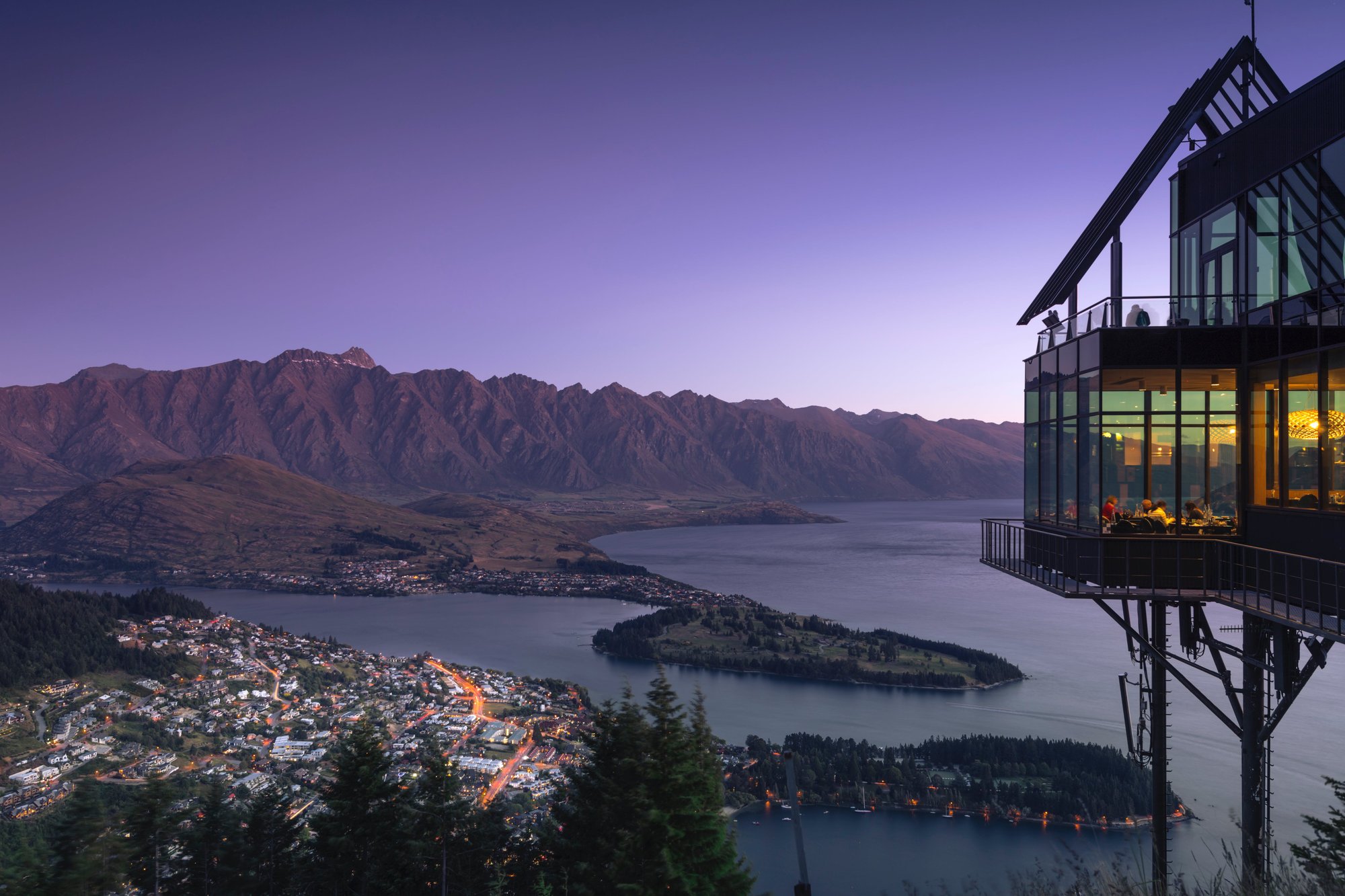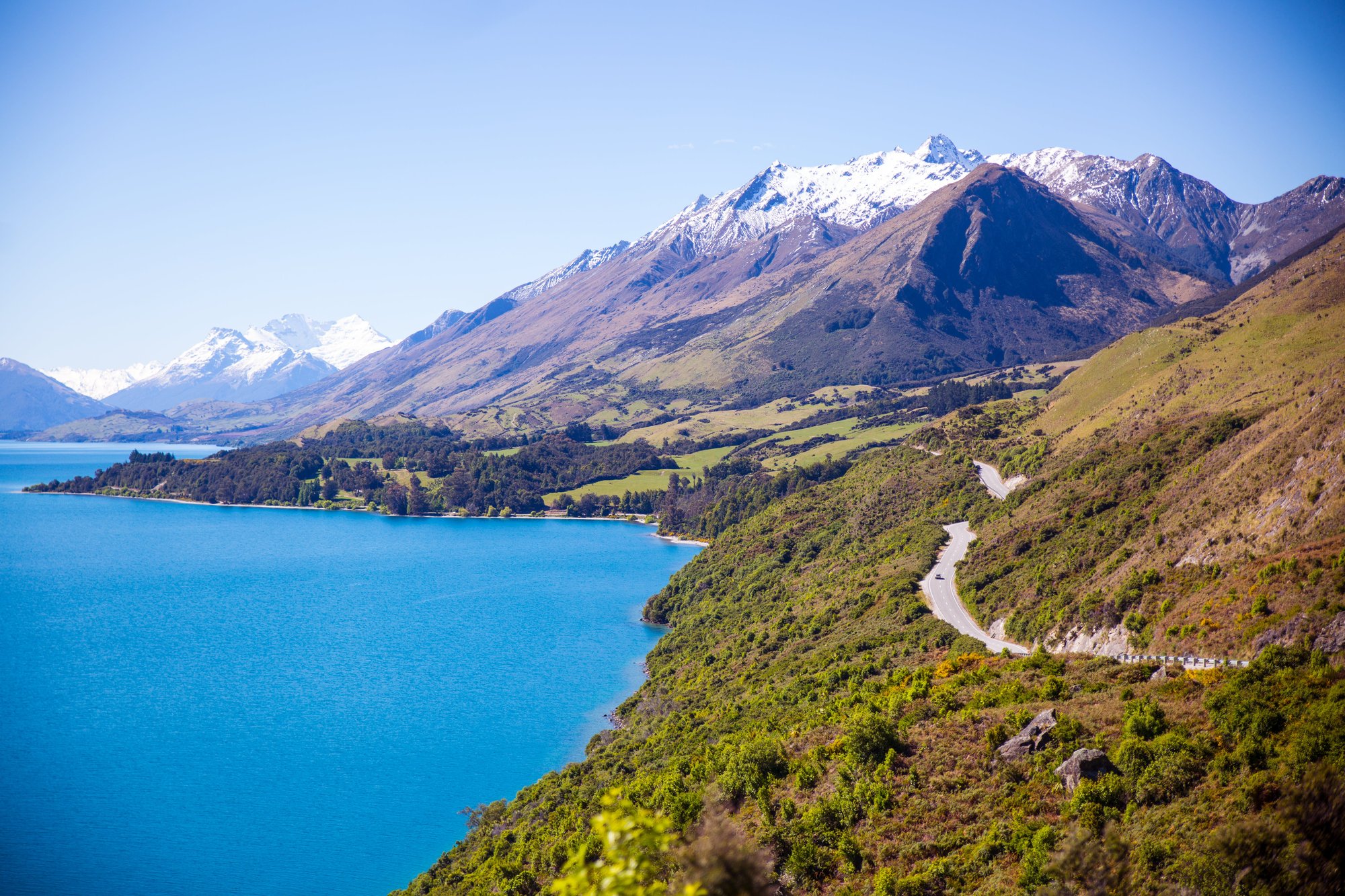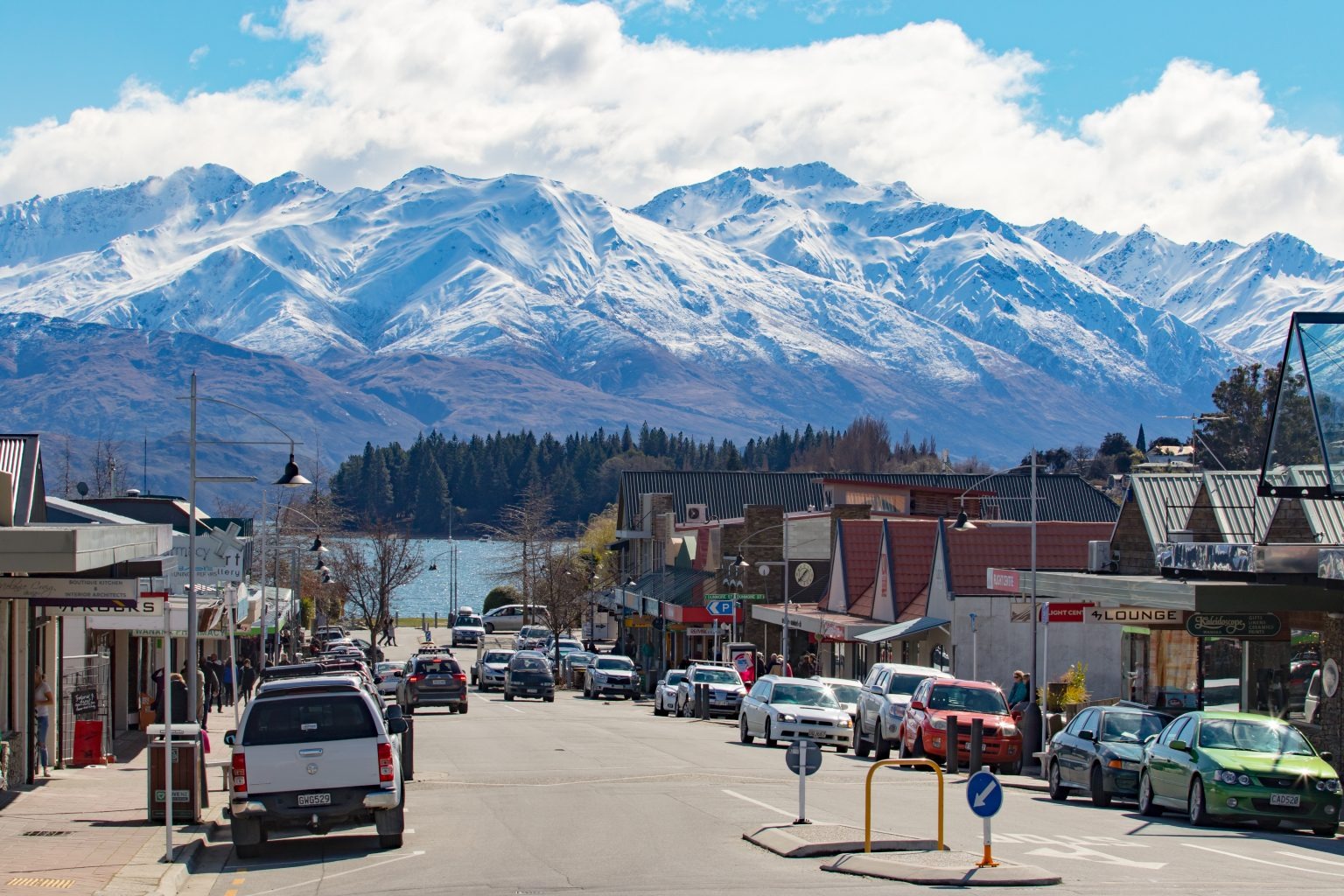Supporting organisations to reduce their commuting emissions with a travel plan
Queenstown Lakes District Council (QLDC) are New Zealand leaders when it comes to taking responsibility for their organisational environmental impact. Their climate action planning is ahead of the game.
One way QLDC are an exemplar of best practise is their recent investment in a travel plan designed to reduce their commuting and business travel carbon emissions.
Adam Bray, Transport Planner at the Council explains, “We’re developing our own travel plan because we want to lead by example. We’re working towards getting all new developments in Queenstown to create travel plans, so we’re leading the initiative and showing what’s possible.”
Why travel plans matter
Commuting and business travel is a significant contributor to global warming, but most New Zealanders still rely on cars to travel to work.
New Zealand’s greenhouse gas emissions rose 26% between 1990 and 2019. Transport was the biggest contributor to this rise, with emissions from road transport growing 93%, and cars contributing 54% of those emissions. Reducing commuting by car can make a big dent in most organisations’ emissions.
A travel plan measures how commuting and business travel contributes to the current environmental impact of your organisation, sets goals to reduce your emissions, and puts in place strategies to meet your goals.
Travel planning is common in other parts of the world. Here in New Zealand, growing awareness of the need to reduce carbon emissions, local and national legislation, along with pressure from customers, stakeholders and staff, will lead to increasing demand on organisations to create travel plans.
.jpg?width=2000&height=1333&name=pexels-ketan-kumawat-724963%20(1).jpg)

Queenstown’s unique challenges
Every organisation has their own motivations for adopting a travel plan. Queenstown Lakes District Council’s primary driving force is to be a positive influence, but they have other factors to consider too.
Adam recalls how the project began. “We’re planning a suite of projects which means we need to expand our workforce. We’ve about 500 staff at the moment, so quite a large council for such a small town. As part of our plan for growth, we’ll be consolidating our team in a new building. We wanted to look at our travel emissions baseline now, so we can understand what impact moving to one building makes.”
Queenstown also has some unique challenges. Our corridors are constrained by geography. We can’t dramatically expand our roads network, we can only accommodate a certain level of traffic on that network, and we’re already maxing out. So, there’s a plan to invest in public transport, walking, and cycling infrastructure to get people out of cars. It’s a beautiful place here, so it makes sense to experience it more.”
How to develop a travel plan
The Council selected Abley as their travel plan partner because of our expertise in active transport and sustainable travel, and our experience developing travel plans.
Adam says, “Abley are strong in the travel planning space. Ann-Marie Head is particularly good. She used to work in travel planning overseas, and brought best practice here, so it’s useful for us to have that experience to draw on. And Abley have been very good. They’ve got great ideas and I’d definitely recommend them.”
“I definitely recommend Abley as a travel plan advisor. They have excellent technical skills, their communication is really good, and they’re great to work with as people.”
Travel planning is a five stage process.
- Understand your current emissions
Our CarbonWise commuting emissions software makes it easy for organisations to measure employees’ travel emissions. Then we analyse that data, so you understand where you’re emitting most carbon. For Queenstown, this included looking at emissions for each location and breaking down emissions by activity. Commuting isn’t the whole story, a chunk of the Council’s emissions also come from business travel. - Set goals for reducing emissions
Once you know where you are now, it’s about where you want to be. We can help you set realistic targets and timeframes. - Explore strategies to reduce emissions
Our extensive experience in travel planning means we can help you explore a wide range of tactics to encourage your team to use their cars less and show you the impact this will have on emissions. We help you identify easy wins and review your policies to see how they can support the change you want to see. For Queenstown, this was about aligning strategic objectives across all their activities, for a smart integrated approach. - Adopt a travel plan.
Your travel plan records your goals and strategies. It’s also a roadmap for implementing change, with a detailed roll out and communications plan. It’s a living document that you update as you learn from doing. - Engage your team.
Make sure your employees feel informed, inspired, and supported to make better commuting and business travel choices with great communications. We also help you consider elements like onboarding new staff, so everyone understands their active travel options.


Collaborative travel planning
Some consultancies treat travel planning as a paint by numbers exercise, giving clients a set of generic recommendations to reduce travel emissions. That’s not how we work because we understand every organisation has different resources, and opportunities.
Our approach to travel planning is highly collaborative because, while we know travel planning, you know your organisation best. Co-designing your travel plan makes the difference between a plan that sits on the shelf gathering dust, and a plan that drives real organisational change.
When it came to Queenstown, the Council established a travel plan steering group that included transport, HR, and Facilities to ensure every part of the organisation had a say. We met with the steering group several times. At the start of the project, we discussed their aspirations. Then we presented baseline emissions data and looked at challenges and opportunities. This steering group will continue to meet to monitor progress and evolve the travel plan as they learn what works best.
Getting people out of cars
The Queenstown Lakes District Council travel plan has a range of initiatives that work together with the district’s wider transport plans. Adam says, “A key goal of the travel plan is to get our people walking and cycling more. That will become easier as we invest substantially in the walking and cycling infrastructure in Queenstown.”
“So, for example, we’re improving some existing walking and cycling routes, like the route along the lakeside between Queenstown and Frankton. That’s an important route because lots of people live in Frankton, but their key cycling commuting route to Queenstown is a gravel track. We’re proposing to pave it, so it will be easier to use.”
“We want to make it as easy as possible for Council staff to choose active transport, so another part of the travel plan is to extend our cycle purchase scheme, which offers support and discounts for staff if they want to buy a bike. We also have a fleet of e-bikes people can use for business travel. And we’ve produced a map showing cycling and walking routes to all our locations.”
“In addition, we’re offering free bus cards and promoting carpooling. We’ve a very high level of single car occupancy in Queenstown. 95% of vehicles driving in peak hours only have one person in them. So, if we can encourage more carpooling, that could lead to initiatives like high-occupancy vehicle lanes.”
A key lever in encouraging people to change how they travel, is parking. Our parking strategy in our draft plan reduces the number of carparking spaces in the city centre and increases the cost of parking. We hope this, combined with better public transport and cycling and walking facilities, will get people out of their cars.”

.jpg?width=2000&height=1333&name=pexels-ketan-kumawat-724963%20(1).jpg)
Queenstown Lakes District Council’s travel plan
The Council is keen to encourage organisations locally and nationally to adopt travel plans, so they’ve allowed us to share details of their plan.
They’ve identified six areas offering the most impact as their focus for action.
-
Shift to travel modes with lower or zero greenhouse gas emissions.
-
Reduce the need to travel.
-
Encourage business units and employees to take responsibility for making healthier and more sustainable travel choices when considering travelling for business.
-
Facilitate carpooling and other ways to group individual trips.
-
Raise employee awareness of alternative ways to travel.
-
Support employees to live less sedentary lives, particularly with the recent shift to flexible working
Initiatives that have been implemented or are being considered include:
-
A subsidised bike purchase scheme, expanding to include e-bikes and e-scooters.
-
Improving bike parking and showering facilities.
-
Shuttle services for clusters of employees.
-
Free and subsidised bus travel.
-
Pooling business vehicles for work trips.
-
Acquiring a fleet of energy-efficient work vehicles including e-cycles and hybrid utes.
-
Adopting policies that reduce emissions, for example supporting and encouraging working from home.
Getting staff onboard is crucial to the success of any travel plan initiative, so these are some ways the Council plans to get their team engaged.
-
Publicising all travel options to employees.
-
Creating maps showing cycling and walking routes to Council locations.
-
Promoting cycle parking and facilities for cyclists.
-
Using employee onboarding to promote active transport options.
-
Events to encourage participation like bike breakfasts and bike challenges.
Playing the long game
The travel plan was well received by the leadership team at Queenstown Lakes District Council and launched to the wider team. The travel plan steering group just conducted their second six-month travel survey to gather emissions data.
Adam explains that the organisation’s in it for the long haul. “It’s going to take a few years before we notice real behavioural change. We’re not expecting to see significant change until a few key strategic pieces fall into place, like the improved walking and cycling infrastructure and changes to parking. Moving to our new location will also help, as it’s closer to the bus interchange and will have better active transport facilities.”
The steering group will be meeting once a month throughout the journey, to create a positive feedback loop where we look at how well we’re implementing the plan, review what’s working, and tweak what we do. This process is based on data, but implementing the plan is more an art than a science, as it’s about inspiring and supporting people to make positive change.
I definitely recommend Abley as a travel plan advisor. They have excellent technical skills, their communication is really good, and they’re great to work with as people.”
Need help developing a travel plan for your organisation?
Abley specialises in helping large organisations track carbon emissions from business travel and commuting and put in place plans to reduce their environmental impact. If you’d like to talk about a travel plan for your organisation, contact our sustainability and transportation specialists.
Get in touch
If you’ve got a question or want to chat to us about how we can help you, contact us.
We look forward to talking with you.
.png?width=556&height=152&name=Abley_MasterLogo-Website%20(1).png)
